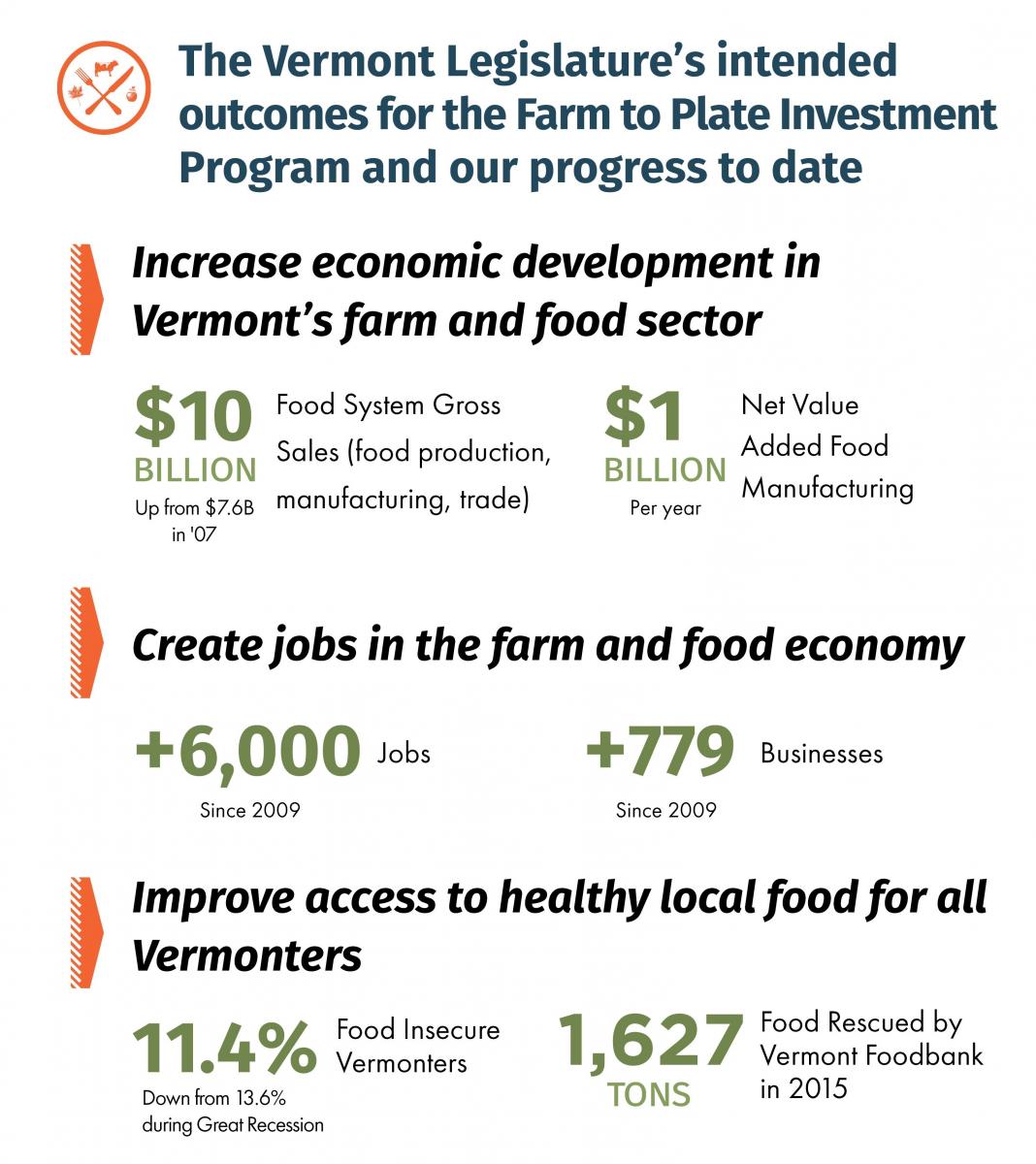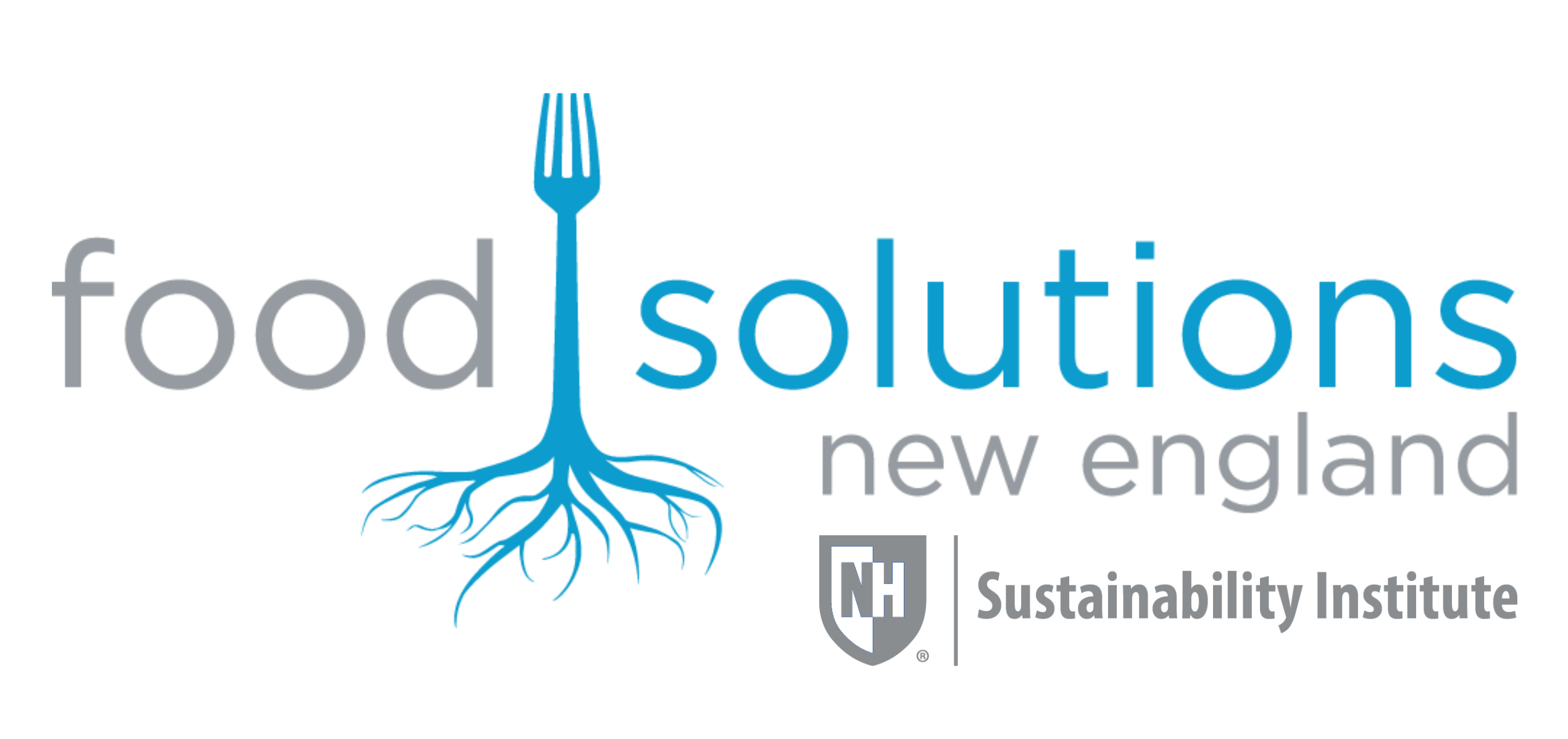
Vermont Farm to Plate is a program of the Vermont Legislature, administered by the Vermont Sustainable Jobs Fund to:
- Increase economic development in Vermont’s farm and food sector;
- Create jobs in the farm and food economy; and
- Improve access to healthy local food for all Vermonters.
The Vermont Legislature tasked the Vermont Sustainable Jobs Fund with conducting a public engagement process and developing a statewide food system plan (Farm to Plate Strategic Plan, 2011-2020) to reach the goals of the legislation (economic development, jobs, access).
Vermont’s Farm to Plate food system plan is the most comprehensive statewide plan in the country and is being implemented by the Vermont Farm to Plate Network—over 350 farms, food production businesses, specialty food producers, educational institutions, nonprofit organizations, capital providers and government agencies working together to create a viable, sustainable and resilient food system to produce and distribute our food.
Each year, the Farm to Plate Annual Report to the Vermont Legislature reports on the progress to date and the challenges being addressed.

Challenges Being Addressed
- Protect and Expand Affordable and Environmentally Sustainable Farmland in Agricultural Production: Access to affordable and environmentally sustainable farmland is imperative to increase our local food supply and grow our agricultural economy. The Farm to Plate Network is creating strategic partnerships and tools to address a continuum of farmland access issues including farm succession planning, farmland conservation, and farmland investment, leasing, and matchmaking. The Network is also working to improve soil and water quality through research, monitoring, information sharing, and training.
- Improve Viability of Farms and Food Businesses: If farms and food businesses are not profitable, Vermont’s agricultural economy cannot be sustainable. Cost and scales of production, sales in different market channels, food safety, business management, infrastructure and equipment, distribution, and environmental impacts all play roles in overall business viability. The Farm to Plate Network addresses these variables by identifying effective business models and building trust and transparency along entire supply chains (e.g. Vermont’s meat industry) to help farmers and producers profitably sell into wholesale, retail, and other markets.
- Increase Local Food Availability and Affordability in All Market Channels: In order for local food to be accessible to all Vermonters, it needs to be more readily available and affordable where most Vermonters purchase food. The Farm to Plate Network works to open new wholesale market channels at institutions and grocery stores in Vermont and New England, while supporting Vermont’s restaurant and direct market channels. The Network seeks to make local food available in these market channels more affordable to consumers through incentive programs, procurement policies, and more efficient supply chain logistics.
- Increase Consumer Engagement and Demand for Local Food: When consumers demand more local food, it sends a signal to the marketplace for more local food to be produced, distributed, and available to Vermonters. The Farm to Plate Network has developed the Rooted in Vermont grassroots change movement to increase consumer education and demand for local food. As farmers and producers scale up production and additional market channels (retail, restaurants, institutions, direct sale) are opened to more Vermont food, Rooted in Vermont aims to stimulate increased awareness, participation, and purchases in Vermont’s local food economy.
- Meet Food System Employment Needs in Positive Work Environments: As the farm and food economy grows, more jobs are created which creates workforce opportunities and challenges for both employees and employers. Coordinated Farm to Plate Network activities are helping prepare and educate students to meet the growing workforce needs of food system employers. The Network is also working to help farm and food businesses improve their human resources management so that workers have better working conditions and wages, while the businesses have a competitive advantage to recruit the workers they need.
Learn more at www.VTFarmtoPlate.com.
Rachel Carter is the Communications Director for Vermont Sustainable Jobs Fund, which coordinates Vermont Farm to Plate.




